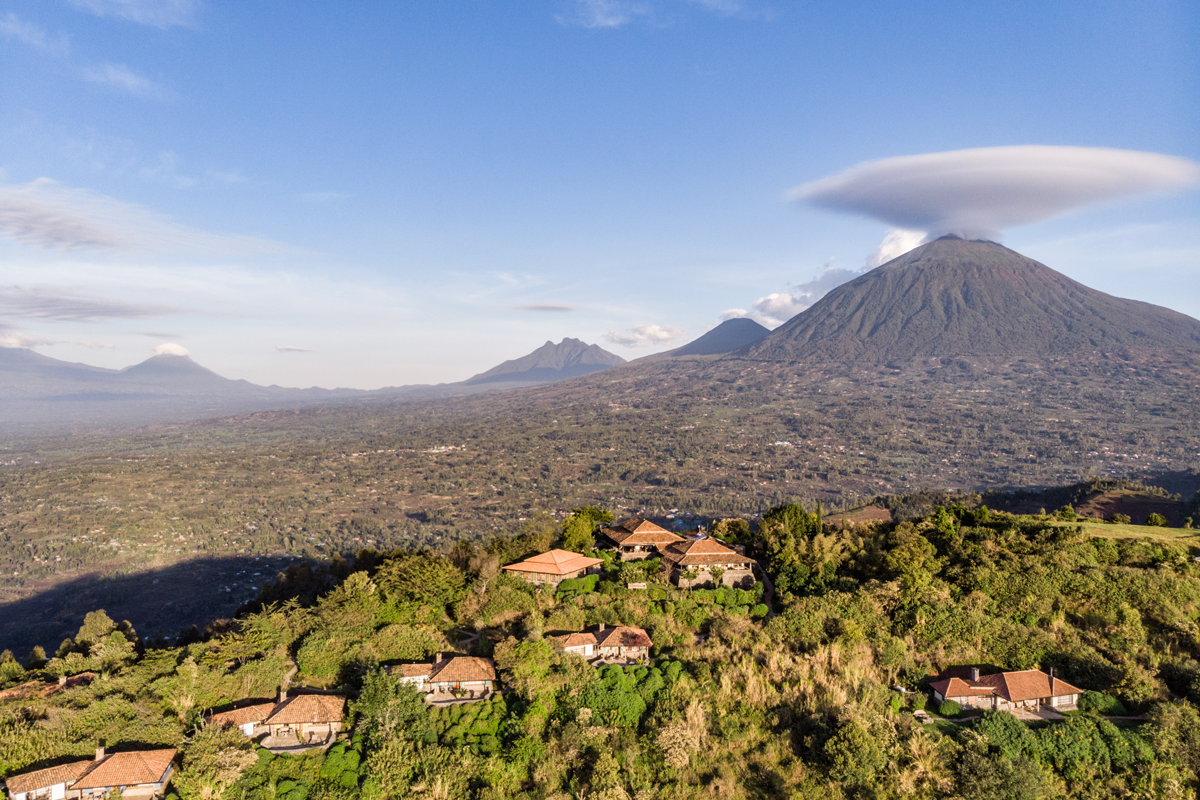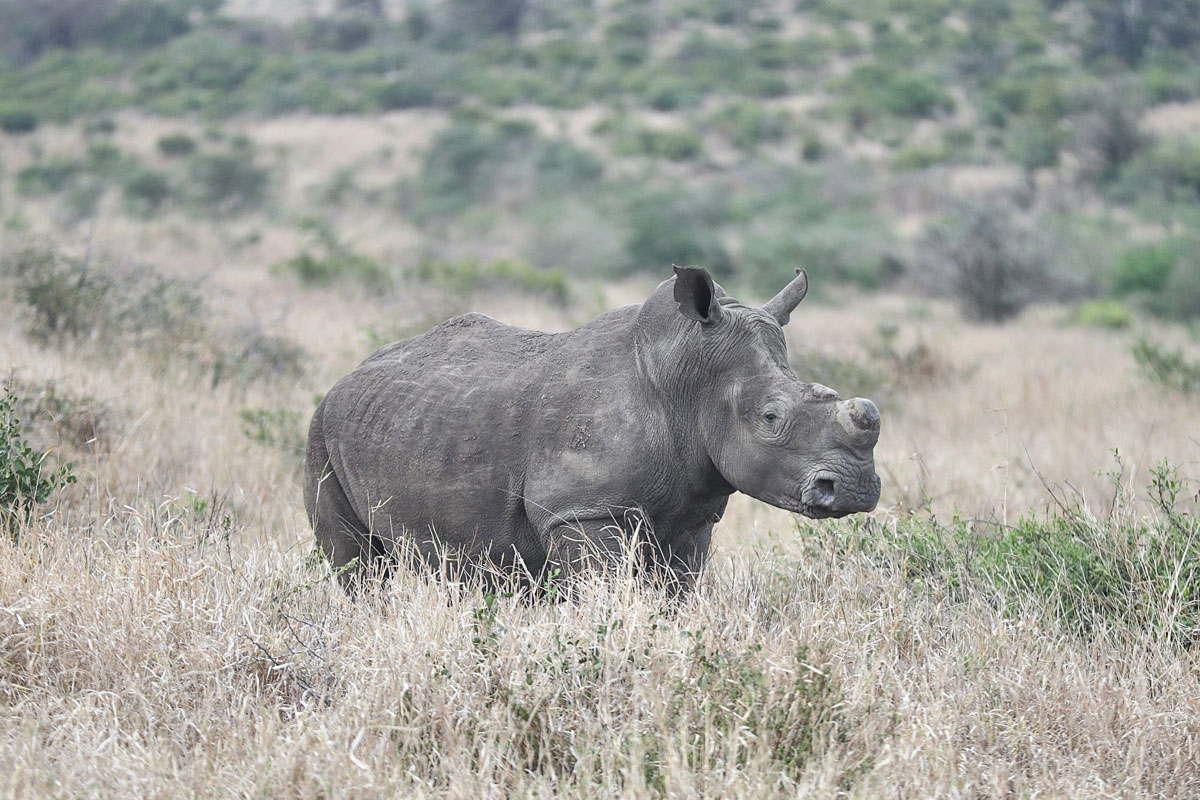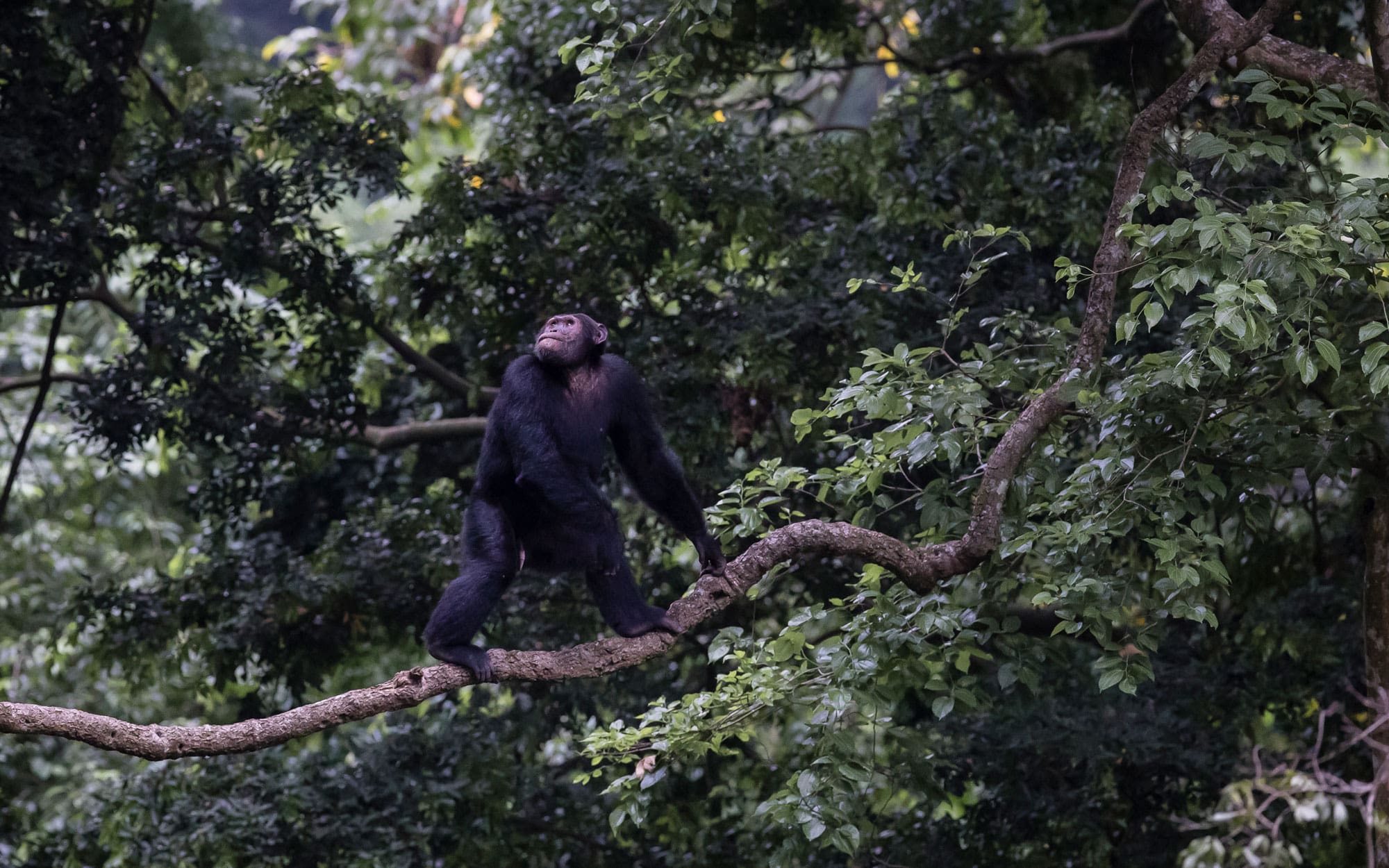There are two types of gorillas: Mountain Gorillas and Lowland Gorillas. Lowland Gorillas are found in Cameroon, Central African Republic, Congo, Equatorial Guinea, Gabon, Angola and the Democratic Republic of Congo. Mountain Gorillas are only found in the Virunga area, shared between the Democratic Republic of the Congo (DRC), Rwanda and Uganda.
In many regards, these two types of gorillas have some notable differences. Mountain Gorillas are typically shorter, have thicker coats, hair that is shiny black and longer compared to the Lowland Gorillas. Mountain Gorillas live in the forests at higher elevations, where the altitude strongly affects the availability and distribution of food. The diet of the Lowland Gorillas is composed of plants; fruits, seeds, leaves and stems and they are known to travel greater distances to search for their preferred seasonal fruits. In the Virungas, most gorilla foods are constantly available, which results in less daily travel among the families as well as less inter-family conflict in terms of competition for food. An interesting fact is that the Lowland Gorillas can survive in a zoo, which is not possible with the Mountain Gorillas.
For many years it has been assumed that the Mountain Gorillas of the Virungas and in Bwindi Impenetrable Forest are one and the same. However, research has proven that the two possess many differences. The Bwindi gorillas have shorter body hair that is black with a brownish tint under the sun, the bare skin below their eyes shows a very fine wrinkling and they have no dorso-nasal cleft. Those in Virunga have long, shaggy jet-black hair, especially along their arms, and long facial hair that covers their ears forms a beard on their face. They have a dorso-nasal cleft with large nostrils and a printed nose.
Bwindi gorillas resemble the Lowland Gorillas more closely, although they still live in mountainous terrain. One reason may be that their habitat’s altitude is lower; therefore they consume more fruits than the Virunga gorillas. They tend to develop more slowly perhaps in regards to the higher seasonality in their diet and lower density of available herbs. Virunga gorillas also tend to be slightly larger than the Bwindi gorillas. This makes logical sense as larger body size and shorter limbs allow easier conservation of heat in colder (higher elevation) climates.
Curious about both species? Join our 8-day “Gorillas in the Virungas and Bwindi” safari and trek both groups yourself!!
Holly, Uganda Office




















